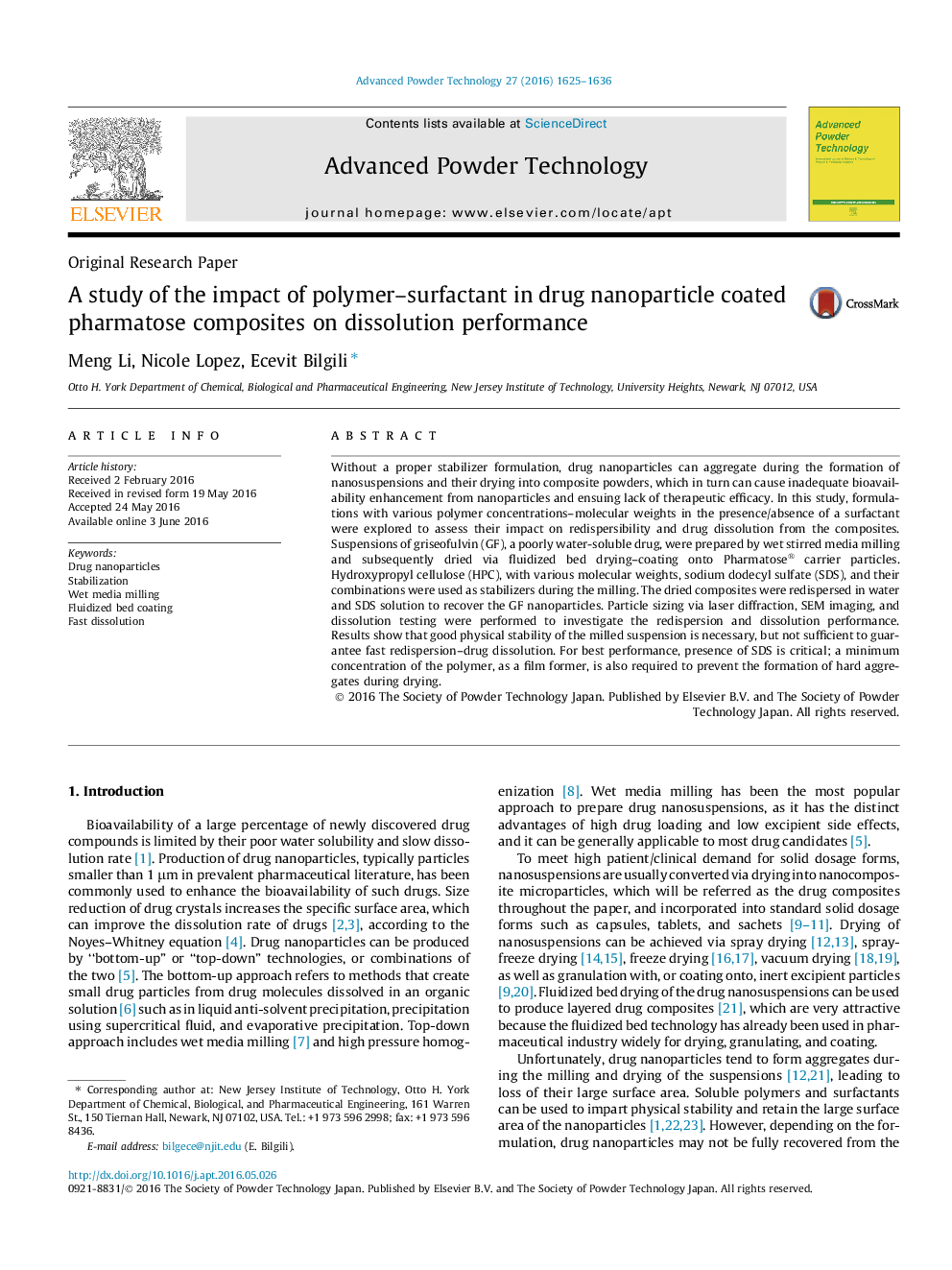| Article ID | Journal | Published Year | Pages | File Type |
|---|---|---|---|---|
| 143955 | Advanced Powder Technology | 2016 | 12 Pages |
•Prepared nanosuspensions of a BCS Class II drug via wet stirred media milling.•Coated–dried them on the surface of Pharmatose® carriers, forming composites.•Investigated the impact of polymer–surfactant on drug redispersion–dissolution.•A stable drug suspension is necessary, but insufficient for good redispersibility.•Presence of surfactant and adequate polymer concentration are found critical.
Without a proper stabilizer formulation, drug nanoparticles can aggregate during the formation of nanosuspensions and their drying into composite powders, which in turn can cause inadequate bioavailability enhancement from nanoparticles and ensuing lack of therapeutic efficacy. In this study, formulations with various polymer concentrations–molecular weights in the presence/absence of a surfactant were explored to assess their impact on redispersibility and drug dissolution from the composites. Suspensions of griseofulvin (GF), a poorly water-soluble drug, were prepared by wet stirred media milling and subsequently dried via fluidized bed drying–coating onto Pharmatose® carrier particles. Hydroxypropyl cellulose (HPC), with various molecular weights, sodium dodecyl sulfate (SDS), and their combinations were used as stabilizers during the milling. The dried composites were redispersed in water and SDS solution to recover the GF nanoparticles. Particle sizing via laser diffraction, SEM imaging, and dissolution testing were performed to investigate the redispersion and dissolution performance. Results show that good physical stability of the milled suspension is necessary, but not sufficient to guarantee fast redispersion–drug dissolution. For best performance, presence of SDS is critical; a minimum concentration of the polymer, as a film former, is also required to prevent the formation of hard aggregates during drying.
Graphical abstractFigure optionsDownload full-size imageDownload as PowerPoint slide
